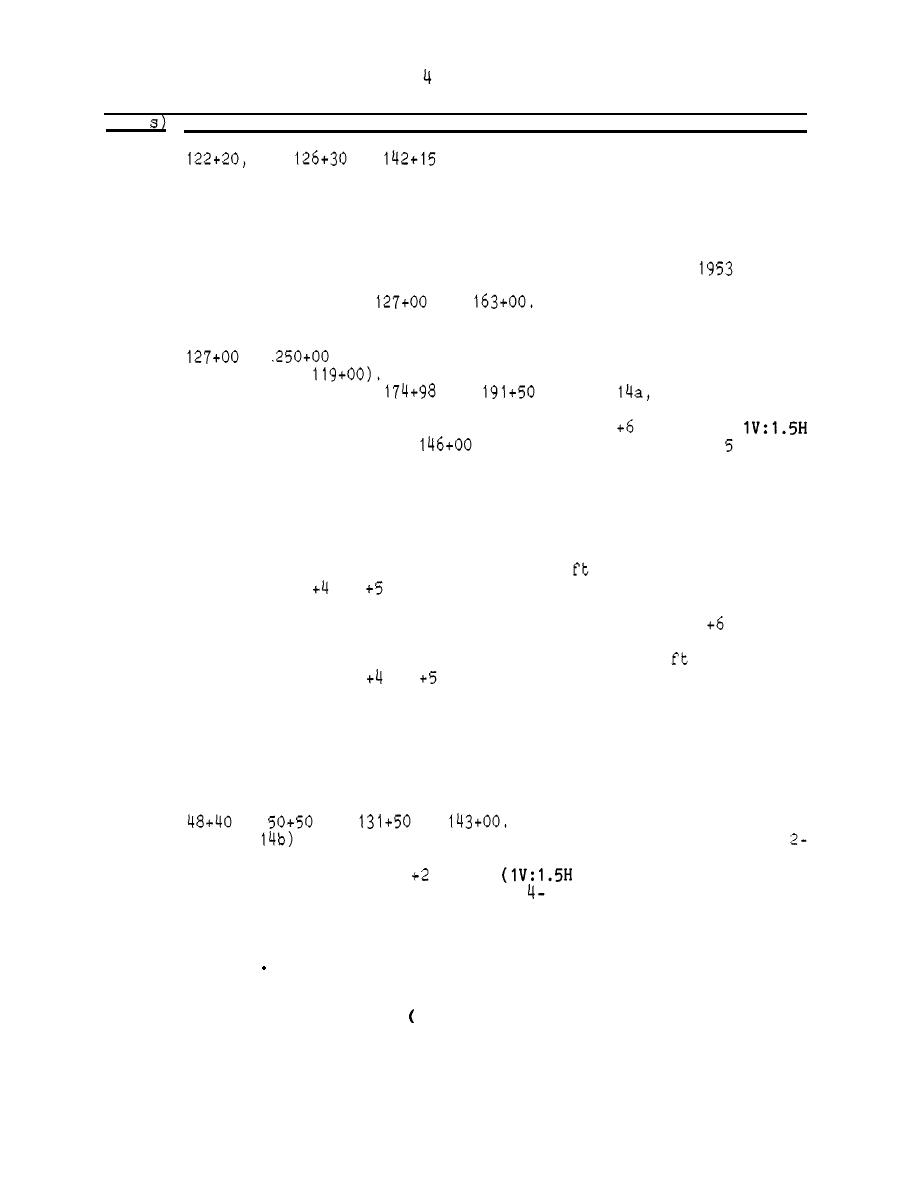
(Continued)
Construction and Rehabilitation History
Date(
and
to
(all these sections consisting of the
1950-
1952
narrower, 3-ft-wide blocks). The total cost for the concrete and
(cont.) stone capping was 9,000.
1954
The east jetty was repaired over a distance of 3,125 ft using
approximately 18,900 tons of stone. Total cost of the repairs was
6,000. From surveys of the east jetty taken in April
and
July 1956, it appears that most of this work was carried out at the
landward end between
and
1956-
The east jetty was repaired with stone along its entire length from
1957
(seaward end) and extended 800 ft at its landward
to
end (to about
The seaward end of the west jetty was capped
with concrete between
and
(Figure
seaward section
where rectangular cap stone was placed in 1951). The east jetty
design cross section had an 8-ft crown width at
ft mlg and
side slopes. Landward of
the design crown width was ft.
Two methods of stone placement were used: either additional cover
stone (1 to 5 tons) was placed, or the existing cover stone (4 to
1 tons) was temporarily removed and additional 500- to 8,000-lb core
0
stone was placed. The landward extension was to employ 200- to
4,000-lb stone, with the larger pieces placed as cover stone.
Center-line surveys of the east jetty taken in April 1953 and July
1956 showed a general settlement of 1 to 2
and typical crest
ft mlg. The west jetty concrete cap was to be
elevations of
to
cast in place with individual blocks weighing not less than 1 tons.
5
The blocks were to be keyed, be 8 ft in width, and have a
ft mlg
crown elevation. Surveys of the west jetty taken in February 1953
and August 1956 showed a general settlement of 1 to 2
and typical
to
ft mlg, for the seaward repair section.
crown elevations of
Cost of the repairs and some work on the South Pass jetties (less
than 20 percent of total) was 9,500.
1960
Repairs were made to the 3-ft-wide concrete cap section of the west
jetty by resetting the blocks that had been dislodged during storm
waves of 1 November 1957 and 1 February 1959. About 1,315 lin ft
8
6
of cap was reset and buttressed with additional stone at sections
The design cross section
to
and
to
(Figure
used to supplement the concrete blocks consisted of a
ft-thick bedding layer of 25- to 200-lb stone, followed by 200- to
side slopes and a 5-ft
2,000-lb stone placed to
ft mlg
width on either side of the cap), and
to 6-ton stone was placed on
either side of the cap. The principal purpose of buttessing was to
provide a more stable cross section for the concrete blocks. The cap
sections were buttressed with 16,400 tons of stone at a cost of
3,600
Continued)
30



 Previous Page
Previous Page
